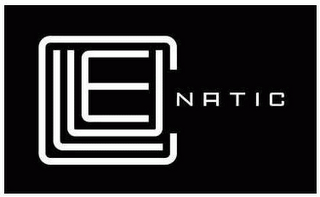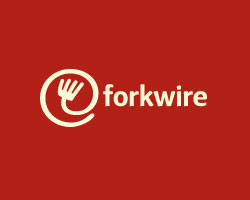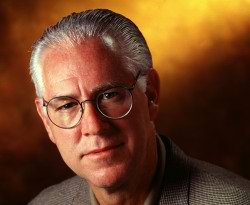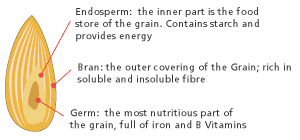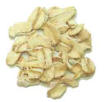sOats gain part of their distinctive flavor from the roasting process that they undergo after being harvested and cleaned. Although oats are then hulled, this process does not strip away their bran and germ allowing them to retain a concentrated source of their fiber and nutrients.
Health Benefits
Lower Cholesterol Levels
A steaming bowl of fresh cooked oatmeal is the perfect way to start off your day, especially if you are trying to prevent or are currently dealing with heart disease or diabetes. Oats, oat bran, and oatmeal contain a specific type of fiber known as beta-glucan. Since 1963, study after study has proven the beneficial effects of this special fiber on cholesterol levels. Studies show that in individuals with high cholesterol (above 220 mg/dl), consuming just 3 grams of soluble oat fiber per day (an amount found in one bowl of oatmeal) typically lowers total cholesterol by 8-23%. This is highly significant since each 1% drop in serum cholesterol translates to a 2% decrease in the risk of developing heart disease. High cholesterol levels correlate with the build up of plaques in blood vessel walls. If these plaques become damaged or simply grow too large, they can rupture, blocking a blood vessel and causing a heart attack, stroke, or blood clots elsewhere in the body. Lowering high cholesterol levels can therefore significantly reduce the risk of cardiovascular disease and stroke.
A study published in the Archives of Internal Medicine confirms that eating high fiber foods, such as oats, helps prevent heart disease. Almost 10,000 American adults participated in this study and were followed for 19 years. People eating the most fiber, 21 grams per day, had 12% less coronary heart disease (CHD) and 11% less cardiovascular disease (CVD) compared to those eating the least, 5 grams daily. Those eating the most water-soluble dietary fiber fared even better with a 15% reduction in risk of CHD and a 10% risk reduction in CVD.
Unique Oat Antioxidants Reduce Risk of Cardiovascular Disease
Oats, via their high fiber content, are already known to help remove cholesterol from the digestive system that would otherwise end up in the bloodstream. Now, the latest research suggests they may have another cardio-protective mechanism.
Antioxidant compounds unique to oats, called avenanthramides, help prevent free radicals from damaging LDL cholesterol, thus reducing the risk of cardiovascular disease, suggests a study conducted at Tufts University and published in The Journal of Nutrition.
In this study, laboratory animals were fed saline containing 0.25 grams of phenol-rich oat bran, after which blood samples were taken at intervals from 20 to 120 minutes. After 40 minutes, blood concentrations of avenanthramides had peaked, showing these compounds were bioavailable (able to be absorbed).
Next, the researchers tested the antioxidant ability of avenanthramides to protect LDL cholesterol against oxidation (free radical damage) induced by copper. Not only did the avenanthramides increase the amount of time before LDL became oxidized, but when vitamin C was added, the oat phenols interacted synergistically with the vitamin, extending the time during which LDL was protected from 137 to 216 minutes.
In another study also conducted at Tufts and published in Atherosclerosis, researchers exposed human arterial wall cells to purified avenenthramides from oats for 24 hours, and found that these oat phenols significantly suppressed the production of several types of molecules involved in the attachment of monocytes (immune cells in the bloodstream) to the arterial wall-the first step in the development of atherosclerosis.
Oat avenanthamides suppressed production of ICAM-1 (intracellular adhesion molecule-1) and VCAM-1 (vascular adhesion molecule-1), E-selectin, and the secretion of pro-inflammatory cytokines KL-6, chemokines IL-8 and protein MCP-1 (monocyte chemoattractant protein). Our advice: Cut an orange (which is rich in vitamin C) in quarters or pour yourself a glass of orange juice to enjoy along with your oatmeal. If you prefer some other grain for your breakfast cereal, top it with a heaping spoonful of oat bran.
Prevent Heart Failure with a Whole Grains Breakfast
Heart failure is the leading cause of hospitalization among the elderly in the United States. Success of drug treatment is only partial (ACE inhibitors and beta-blockers are typically used; no evidence has found statins safe or effective for heart failure), and its prognosis remains poor. Follow up of 2445 discharged hospital patients with heart failure revealed that 37.3% died during the first year, and 78.5% died within 5 years.
Arch Intern Med. 2007 Mar 12;167(5):490-6.;
Eur Heart J. 2006 Mar;27(6):641-3. Since consumption of whole grain products and dietary fiber has been shown to reduce the risk of high blood pressure and heart attack, Harvard researchers decided to look at the effects of cereal consumption on heart failure risk and followed 21,376 participants in the Physicians Health Study over a period of 19.6 years. After adjusting for confounding factors (age, smoking, alcohol consumption, vegetable consumption, use of vitamins, exercise, and history of heart disease), they found that men who simply enjoyed a daily morning bowl of whole grain (but not refined) cereal had a 29% lower risk of heart failure. Arch Intern Med. 2007 Oct 22;167(19):2080-5. Isn't your heart worth protecting, especially when the prescription-a morning bowl of hearty whole grains-is so delicious? For quick, easy, heart-healthy, whole grain recipes, click The World's Healthiest Foods, and look at the "How to Enjoy" section in any of our grain profiles.
Significant Cardiovascular Benefits for Postmenopausal Women
Eating a serving of whole grains, such as oats, at least 6 times each week is an especially good idea for postmenopausal women with high cholesterol, high blood pressure or other signs of cardiovascular disease (CVD).
A 3-year prospective study of over 200 postmenopausal women with CVD, published in the American Heart Journal, shows that those eating at least 6 servings of whole grains each week experienced both:
- Slowed progression of atherosclerosis, the build-up of plaque that narrows the vessels through which blood flows, and
- Less progression in stenosis, the narrowing of the diameter of arterial passageways.
The women's intake of fiber from fruits, vegetables and refined grains was
not associated with a lessening in CVD progression.
Enhance Immune Response to Infection
In laboratory studies reported in Surgery, beta-glucan significantly enhanced the human immune system's response to bacterial infection. Beta-glucan not only helps neutrophils (the most abundant type of non-specific immune cell) navigate to the site of an infection more quickly, it also enhances their ability to eliminate the bacteria they find there.
According to study leader Jonathan Reichner of the Department of Surgery at Rhode Island Hospital and Brown University, priming neutrophils with beta-glucan helps these immune defenders quickly locate the bacterial mother lode within infected tissue. And this more rapid response to infection results in faster microbial clearance and healing. Since our non-specific immune defenses are the body's first strike forces against invading pathogens, starting your day with a bowl of oatmeal may boost your immune response in addition to your morning energy levels.
Stabilize Blood Sugar
Studies also show that beta-glucan has beneficial effects in diabetes as well. Type 2 diabetes patients given foods high in this type of oat fiber or given oatmeal or oat bran rich foods experienced much lower rises in blood sugar compared to those who were given white rice or bread. Starting out your day with a blood sugar stabilizing food such as oats may make it easier to keep blood sugar levels under control the rest of the day, especially when the rest of your day is also supported with nourishing fiber-rich foods.
Oats and Other Whole Grains Substantially Lower Type 2 Diabetes Risk
Oats and other whole grains are a rich source of magnesium, a mineral that acts as a co-factor for more than 300 enzymes, including enzymes involved in the body's use of glucose and insulin secretion.
The FDA permits foods that contain at least 51% whole grains by weight (and are also low in fat, saturated fat, and cholesterol) to display a health claim stating consumption is linked to lower risk of heart disease and certain cancers. Now, research suggests regular consumption of whole grains also reduces risk of type 2 diabetes. (van Dam RM, Hu FB, Diabetes Care).
In this 8-year trial, involving 41,186 particpants of the Black Women's Health Study, research data confirmed inverse associations between magnesium, calcium and major food sources in relation to type 2 diabetes that had already been reported in predominantly white populations.
Risk of type 2 diabetes was 31% lower in black women who frequently ate whole grains compared to those eating the least of these magnesium-rich foods. When the women's dietary intake of magnesium intake was considered by itself, a beneficial, but lesser-19%-reduction in risk of type 2 diabetes was found, indicating that whole grains offer special benefits in promoting healthy blood sugar control. Daily consumption of low-fat dairy foods was also helpful, lowering risk of type 2 diabetes by 13%. Enjoy a hearty breakfast and get the benefits of both oats and dairy by serving hot oatmeal, spiced with cinnamon, and topped with handful of walnuts and low-fat milk.
Antioxidant Benefits
In addition to its fiber benefits, oats are also a very good source of selenium. A necessary cofactor of the important antioxidant, glutathione peroxidase, selenium works with vitamin E in numerous vital antioxidant systems throughout the body. These powerful antioxidant actions make selenium helpful in decreasing asthma symptoms and in the prevention of heart disease. In addition, selenium is involved in DNA repair and is associated with a reduced risk for cancer, especially colon cancer.
Fiber from Whole Grains and Fruit Protective against Breast Cancer
When researchers looked at how much fiber 35,972 participants in the UK Women's Cohort Study ate, they found a diet rich in fiber from whole grains, such as oats, and fruit offered significant protection against breast cancer for pre-menopausal women. (Cade JE, Burley VJ, et al., International Journal of Epidemiology).
Pre-menopausal women eating the most fiber (>30 grams daily) more than halved their risk of developing breast cancer, enjoying a 52% lower risk of breast cancer compared to women whose diets supplied the least fiber (<20>
Fiber supplied by whole grains offered the most protection. Pre-menopausal women eating the most whole grain fiber (at least 13 g/day) had a 41% reduced risk of breast cancer, compared to those with the lowest whole grain fiber intake (4 g or less per day).
Fiber from fruit was also protective. Pre-menopausal women whose diets supplied the most fiber from fruit (at least 6 g/day) had a 29% reduced risk of breast cancer, compared to those with the lowest fruit fiber intake (2 g or less per day).
Practical Tip: As the following table shows, it's surprisingly easy to enjoy a healthy way of eating that delivers at least 13 grams of whole grain fiber and 6 grams of fiber from fruit each day.
| Food | Fiber Content in Grams |
|---|
| Oatmeal, 1 cup | 3.98 |
| Whole wheat bread, 1 slice | 2 |
| Whole wheat spaghetti, 1 cup | 6.3 |
| Brown rice, 1 cup | 3.5 |
| Barley, 1 cup | 13.6 |
| Buckwheat, 1 cup | 4.54 |
| Rye, 1/3 cup | 8.22 |
| Corn, 1 cup | 4.6 |
| Apple, 1 medium with skin | 5.0 |
| Banana, 1 medium | 4.0 |
| Blueberries, 1 cup | 3.92 |
| Orange, 1 large | 4.42 |
| Pear, 1 large | 5.02 |
| Prunes, 1/4 cup | 3.02 |
| Strawberries, 1 cup | 3.82 |
| Raspberries, 1 cup | 8.36 |
*Fiber content can vary between brands. Source: esha Research, Food Processor for Windows, Version 7.8
Cereal and Fruit Fiber Protective against Postmenopausal Breast Cancer
Results of a prospective study involving 51,823 postmenopausal women for an average of 8.3 years showed a 34% reduction in breast cancer risk for those consuming the most fruit fiber compared to those consuming the least. In addition, in the subgroup of women who had ever used hormone replacement, those consuming the most fiber, especially cereal fiber, had a 50% reduction in their risk of breast cancer compared to those consuming the least. Int J Cancer. 2008 Jan 15;122(2):403-12.
Fruits richest in fiber include apples, dates, figs, pears and prunes. When choosing a high fiber cereal, look for whole grain cereals as they supply the most bran (a mere 1/3rd cup of bran contains about 14 grams of fiber). A cup of oatmeal delivers 15% of the RDI for fiber. Start out your day with a bowl of hot oatmeal or if you prefer cold cereal, oatmeal granola, and you'll be well on your way to meeting your daily RDI for fiber.
Whole Grains and Fish Highly Protective against Childhood Asthma
According to the American Lung Association, almost 20 million Americans suffer from asthma, which is reported to be responsible for over 14 million lost school days in children, and an annual economic cost of more than $16.1 billion.
Increasing consumption of whole grains and fish could reduce the risk of childhood asthma by about 50%, suggests the International Study on Allergy and Asthma in Childhood (Tabak C, Wijga AH, Thorax).
The researchers, from the Dutch National Institute of Public Health and the Environment, Utrecht University, University Medical Center Groningen, used food frequency questionnaires completed by the parents of 598 Dutch children aged 8-13 years. They assessed the children's consumption of a range of foods including fish, fruits, vegetables, dairy and whole grain products. Data on asthma and wheezing were also assessed using medical tests as well as questionnaires.
While no association between asthma and intake of fruits, vegetables, and dairy products was found (a result at odds with other studies that have supported a link between antioxidant intake, particularly vitamins C and E, and asthma), the children's intake of both whole grains and fish was significantly linked to incidence of wheezing and current asthma.
In children with a low intake of fish and whole grains, the prevalence of wheezing was almost 20%, but was only 4.2% in children with a high intake of both foods. Low intake of fish and whole grains also correlated with a much higher incidence of current asthma (16.7%). compared to only a 2.8% incidence of current asthma among children with a high intake of both foods.
After adjusting results for possible confounding factors, such as the educational level of the mother, and total energy intake, high intakes of whole grains and fish were found to be associated with a 54 and 66% reduction in the probability of being asthmatic, respectively.
The probability of having asthma with bronchial hyperresponsiveness (BHR), defined as having an increased sensitivity to factors that cause narrowing of the airways, was reduced by 72 and 88% when children had a high-intake of whole grains and fish, respectively. Lead researcher, CoraTabak commented, "The rise in the prevalence of asthma in western societies may be related to changed dietary habits." We agree. The Standard American Diet is sorely deficient in the numerous anti-inflammatory compounds found in fish and whole grains, notably, the omega-3 fats supplied by cold water fish and the magnesium and vitamin E provided by whole grains. One caution: wheat may need to be avoided as it is a common food allergen associated with asthma.
Health-Promoting Activity Equal to or Even Higher than that of Vegetables and Fruits
Research reported at the American Institute for Cancer Research (AICR) International Conference on Food, Nutrition and Cancer, by Rui Hai Liu, M.D., Ph.D., and his colleagues at Cornell University shows that whole grains, such as oats, contain many powerful phytonutrients whose activity has gone unrecognized because research methods have overlooked them.
Despite the fact that for years researchers have been measuring the antioxidant power of a wide array of phytonutrients, they have typically measured only the "free" forms of these substances, which dissolve quickly and are immediately absorbed into the bloodstream. They have not looked at the "bound" forms, which are attached to the walls of plant cells and must be released by intestinal bacteria during digestion before they can be absorbed.
Phenolics, powerful antioxidants that work in multiple ways to prevent disease, are one major class of phytonutrients that have been widely studied. Included in this broad category are such compounds as quercetin, curcumin, ellagic acid, catechins, and many others that appear frequently in the health news.
When Dr. Liu and his colleagues measured the relative amounts of phenolics, and whether they were present in bound or free form, in common fruits and vegetables like apples, red grapes, broccoli and spinach, they found that phenolics in the "free" form averaged 76% of the total number of phenolics in these foods. In whole grains, however, "free" phenolics accounted for less than 1% of the total, while the remaining 99% were in "bound" form.
In his presentation, Dr. Liu explained that because researchers have examined whole grains with the same process used to measure antioxidants in vegetables and fruits-looking for their content of "free" phenolics"-the amount and activity of antioxidants in whole grains has been vastly underestimated.
Despite the differences in fruits', vegetables' and whole grains' content of "free" and "bound" phenolics, the total antioxidant activity in all three types of whole foods is similar, according to Dr. Liu's research. His team measured the antioxidant activity of various foods, assigning each a rating based on a formula (micromoles of vitamin C equivalent per gram). Broccoli and spinach measured 80 and 81, respectively; apple and banana measured 98 and 65; and of the whole grains tested, corn measured 181, whole wheat 77, oats 75, and brown rice 56.
Dr. Liu's findings may help explain why studies have shown that populations eating diets high in fiber-rich whole grains consistently have lower risk for colon cancer, yet short-term clinical trials that have focused on fiber alone in lowering colon cancer risk, often to the point of giving subjects isolated fiber supplements, yield inconsistent results. The explanation is most likely that these studies have not taken into account the interactive effects of all the nutrients in whole grains-not just their fiber, but also their many phytonutrients.
As far as whole grains are concerned, Dr. Liu believes that the key to their powerful cancer-fighting potential is precisely their wholeness. A grain of whole wheat consists of three parts-its endosperm (starch), bran and germ. When wheat-or any whole grain-is refined, its bran and germ are removed. Although these two parts make up only 15-17% of the grain's weight, they contain 83% of its phenolics. Dr. Liu says his recent findings on the antioxidant content of whole grains reinforce the message that a variety of foods should be eaten good health. "Different plant foods have different phytochemicals," he said. "These substances go to different organs, tissues and cells, where they perform different functions. What your body needs to ward off disease is this synergistic effect - this teamwork - that is produced by eating a wide variety of plant foods, including whole grains."
Lignans Protect against Heart Disease
One type of phytochemical especially abundant in whole grains including oats are plant lignans, which are converted by friendly flora in our intestines into mammalian lignans, including one called enterolactone that is thought to protect against breast and other hormone-dependent cancers as well as heart disease. In addition to whole grains, nuts, seeds and berries are rich sources of plant lignans, and vegetables, fruits, and beverages such as coffee, tea and wine also contain some. When blood levels of enterolactone were measured in over 800 postmenopausal women in a Danish study published in the Journal of Nutrition, women eating the most whole grains were found to have significantly higher blood levels of this protective lignan. Women who ate more cabbage and leafy vegetables also had higher enterolactone levels.
A Well-tolerated Wheat Alternative for Children and Adults with Celiac Disease
Although treatment of celiac disease has been thought to require lifelong avoidance of the protein gluten, which is found in wheat, rye, barley and oats, recent studies of adults have shown that oats, despite the small amount of gluten they contain, are well-tolerated. Now, a double blind, multi-center study involving 8 clinics treating 116 children newly diagnosed celiac disease suggests oats are a good grain choice for children with celiac disease as well. The children were randomly assigned to receive either the standard gluten-free diet (no wheat, barley, rye or oats) or a gluten-free diet with some wheat-free oat products. At the end of the study, which ran for a year, all the children were doing well, and in both groups, the mucosal lining of the small bowel (which is damaged by wheat gluten in celiac disease) had healed and the immune system (which is excessively reactive in celiac patients) had returned to normal.
Meta-analysis Explains Whole Grains' Health Benefits
In many studies, eating whole grains, such as oats, has been linked to protection against atherosclerosis, ischemic stroke, diabetes, insulin resistance, obesity, and premature death. A new study and accompanying editorial, published in the American Journal of Clinical Nutrition explains the likely reasons behind these findings and recommends at least 3 servings of whole grains should be eaten daily.
Whole grains are excellent sources of fiber. In this meta-analysis of 7 studies including more than 150,000 persons, those whose diets provided the highest dietary fiber intake had a 29% lower risk of cardiovascular disease compared to those with the lowest fiber intake.
But it's not just fiber's ability to serve as a bulking agent that is responsible for its beneficial effects as a component of whole grains. Wheat bran, for example, which constitutes 15% of most whole-grain wheat kernels but is virtually non-existent in refined wheat flour, is rich in minerals, antioxidants, lignans, and other phytonutrients-as well as in fiber.
In addition to the matrix of nutrients in their dietary fibers, the whole-grain arsenal includes a wide variety of additional nutrients and phytonutrients that reduce the risk of cardiovascular disease. Compounds in whole grains that have cholesterol-lowering effects include polyunsaturated fatty acids, oligosaccharides, plant sterols and stanols, and saponins.
Whole grains are also important dietary sources of water-soluble, fat-soluble, and insoluble antioxidants. The long list of cereal antioxidants includes vitamin E, tocotrieonols, selenium, phenolic acids, and phytic acid. These multifunctional antioxidants come in immediate-release to slow-release forms and thus are available throughout the gastrointestinal tract over a long period after being consumed.
The high antioxidant capacity of wheat bran, for example, is 20-fold that of refined wheat flour (endosperm). Although the role of antioxidant supplements in protecting against cardiovascular disease has been questioned, prospective population studies consistently suggest that when consumed in whole foods, antioxidants are associated with significant protection against cardiovascular disease. Because free radical damage to cholesterol appears to contribute significantly to the development of atherosclerosis, the broad range of antioxidant activities from the phytonutrients abundant in whole-grains is thought to play a strong role in their cardio-protective effects.
Like soybeans, whole grains are good sources of phytoestrogens, plant compounds that may affect blood cholesterol levels, blood vessel elasticity, bone metabolism, and many other cellular metabolic processes.
Whole grains are rich sources of lignans that are converted by the human gut to enterolactone and enterodiole. In studies of Finnish men, blood levels of enterolactone have been found to have an inverse relation not just to cardiovascular-related death, but to all causes of death, which suggests that the plant lignans in whole grains may play an important role in their protective effects.
Lower insulin levels may also contribute to the protective effects of whole grains. In many persons, the risks of atherosclerotic cardiovascular disease, diabetes, and obesity are linked to insulin resistance. Higher intakes of whole grains are associated with increased sensitivity to insulin in population studies and clinical trials. Why? Because whole grains improve insulin sensitivity by lowering the glycemic index of the diet while increasing its content of fiber, magnesium, and vitamin E.
The whole kernel of truth: as part of your healthy way of eating, whole grains can significantly lower your risk of cardiovascular disease, obesity and type 2 diabetes. Enjoy at least 3 servings a day. No idea how to cook whole grains? Just look at the "How to Enjoy" section in our profiles of the whole grains, or for quick, easy, delicious recipes, click on this link to our Recipe Assistant and select oats or whichever whole grain you would like to prepare.
Description
Oats, known scientifically as Avena sativa, are a hardy cereal grain able to withstand poor soil conditions in which other crops are unable to thrive. Their fortitude seems to be transferred to those who consume this nutrient-rich grain. After all, when we think of a satisfying and enriching way to start the day, one that gives us strength and lasting energy, we oftentimes relish the thought of a hot bowl of oatmeal.
Oats gain part of their distinctive flavor from the roasting process that they undergo after being harvested and cleaned. Although oats are then hulled, this process does not strip away their bran and their germ allowing them to retain a concentrated source of their fiber and nutrients. Different types of processing are then used to produce the various types of oat products, which are generally used to make breakfast cereals, baked goods and stuffings:
- Oat groats: unflattened kernels that are good for using as a breakfast cereal or for stuffing
- Steel-cut oats: featuring a dense and chewy texture, they are produced by running the grain through steel blades that thinly slices them.
- Old-fashioned oats: have a flatter shape that is the result of their being steamed and then rolled.
- Quick-cooking oats: processed like old-fashioned oats, except they are cut finely before rolling
- Instant oatmeal: produced by partially cooking the grains and then rolling them very thin. Oftentimes, sugar, salt and other ingredients are added to make the finished product.
- Oat bran: the outer layer of the grain that resides under the hull. While oat bran is found in rolled oats and steel-cut oats, it may also be purchased as a separate product that can be added to recipes or cooked to make a hot cereal.
- Oat flour: used in baking, it is oftentimes combined with wheat or other gluten-containing flours when making leavened bread.
History
The modern oat draws its ancestry from the wild red oat, a plant originating in Asia. Oats have been cultivated for two thousand years in various regions throughout the world. Before being consumed as a food, oats were used for medicinal purposes, a use for which they are still honored. The growing of oats in Europe was widespread, and oats constituted an important commercial crop since they were a dietary staple for the people of many countries including Scotland, Great Britain, Germany and the Scandinavian countries. In the early 17th century, Scottish settlers brought oats to North America. Today, the largest commercial producers of oats include the Russian Federation, the United States, Germany, Poland and Finland.
How to Select and Store
Buy small quantities of oats at one time since this grain has a slightly higher fat content than other grains and will go rancid more quickly. Oats are generally available in prepackaged containers as well as bulk bins. Just as with any other food that you may purchase in the bulk section, make sure that the bins containing the oats are covered, free from debris, and that the store has a good product turnover so as to ensure its maximal freshness. Smell the oats to make sure that they are fresh. Whether purchasing oats in bulk or in a packaged container, make sure there is no evidence of moisture.
If you purchase prepared oatmeal products such as oatmeal, look at the ingredients to ensure that the product does not contain any salt, sugar or other additives.
Store oatmeal in an airtight container in a cool, dry and dark place where they will keep for approximately two months.
How to Enjoy
For some of our favorite recipes, click Recipes.
Tips for Cooking Oats:
Different types of oats require slightly different cooking methods for making hot cereal or porridge. For all types, it is best to add the oats to cold water and then cook at a simmer. The preparation of rolled oats and steel-cut oats require similar proportions using two parts water to one part oats. Rolled oats take approximately 15 minutes to cook while the steel-cut variety takes about 30 minutes. Due to their consistency, oat groats require more time and more water. Use three parts water to one part oat groats and simmer for approximately 50 minutes.
A Few Quick Serving Ideas:
A great way to start your day-add your favorite nuts and fruits to a piping hot bowl of oatmeal.
Oatmeal cookies are a favorite for kids of all ages.
Add oat flour or whole oats the next time you make bread or muffins.
Sprinkle oat bran on your hot or cold cereal.
Oat groats make a great basis for stuffing for poultry.
Individual Concerns
Oats and Purines
Oats contain naturally-occurring substances called purines.
Purines are commonly found in plants, animals, and humans. In some individuals who are susceptible to purine-related problems, excessive intake of these substances can cause health problems. Since purines can be broken down to form uric acid, excess accumulation of purines in the body can lead to excess accumulation of uric acid. The health condition called "gout" and the formation of kidney stones from uric acid are two examples of uric acid-related problems that can be related to excessive intake of purine-containing foods. For this reason, individuals with kidney problems or gout may want to limit or avoid intake of purine-containing foods such as oats. Yet, recent research has suggested that purines from meat and fish increase risk of gout, while purines from plant foods fail to change the risk. For more on this subject, please see
"What are purines and in which foods are they found?" Oats and the Gluten Grains
Oats are members of a non-scientifically established grain group traditionally called the "gluten grains." The idea of grouping certain grains together under the label "gluten grains" has come into question in recent years as technology has given food scientists a way to look more closely at the composition of grains. Some healthcare practitioners continue to group wheat, oats, barley and rye together under the heading of "gluten grains" and to ask for elimination of the entire group on a wheat-free diet. Other practitioners now treat wheat separately from these other grains, including oats, based on recent research. Wheat is unquestionably a more common source of food reactions than any of the other "gluten grains," including oats. Although you may initially want to eliminate oats from your meal planning if you are implementing a wheat-free diet, you will want to experiment at some point with re-introduction of this food. You may be able to take advantage of its diverse nutritional benefits without experiencing an adverse reaction. Individuals with wheat-related conditions like celiac sprue or gluten-sensitive enteropathies should consult with their healthcare practitioner before experimenting with any of the "gluten grains," including oats.
Nutritional Profile
Oats are an excellent source of manganese and a very good source of selenium. In addition, oats are a good source of vitamin B1, dietary fiber, magnesium, protein and phosphorus.
For an in-depth nutritional profile click here: Oats.
In-Depth Nutritional Profile
In addition to the nutrients highlighted in our ratings chart, an in-depth nutritional profile for
Oats is also available. This profile includes information on a full array of nutrients, including carbohydrates, sugar, soluble and insoluble fiber, sodium, vitamins, minerals, fatty acids, amino acids and more.
Introduction to Food Rating System Chart
In order to better help you identify foods that feature a high concentration of nutrients for the calories they contain, we created a Food Rating System. This system allows us to highlight the foods that are especially rich in particular nutrients. The following chart shows the nutrients for which this food is either an excellent, very good, or good source (below the chart you will find a table that explains these qualifications). If a nutrient is not listed in the chart, it does not necessarily mean that the food doesn't contain it. It simply means that the nutrient is not provided in a sufficient amount or concentration to meet our rating criteria. (To view this food's in-depth nutritional profile that includes values for dozens of nutrients - not just the ones rated as excellent, very good, or good - please use the link below the chart.) To read this chart accurately, you'll need to glance up in the top left corner where you will find the name of the food and the serving size we used to calculate the food's nutrient composition. This serving size will tell you how much of the food you need to eat to obtain the amount of nutrients found in the chart. Now, returning to the chart itself, you can look next to the nutrient name in order to find the nutrient amount it offers, the percent Daily Value (DV%) that this amount represents, the nutrient density that we calculated for this food and nutrient, and the rating we established in our rating system. For most of our nutrient ratings, we adopted the government standards for food labeling that are found in the U.S. Food and Drug Administration's "Reference Values for Nutrition Labeling."
Read more background information and details of our rating system.
Oats, whole grain, cooked
1.00 cup
234.00 grams
145.08 calories | | Nutrient | Amount | DV
(%) | Nutrient
Density | World's Healthiest
Foods Rating |
|---|
| manganese | 1.37 mg | 68.5 | 8.5 | excellent | | selenium | 18.95 mcg | 27.1 | 3.4 | very good | | tryptophan | 0.08 g | 25.0 | 3.1 | good | | phosphorus | 177.84 mg | 17.8 | 2.2 | good | | vitamin B1 (thiamin) | 0.26 mg | 17.3 | 2.2 | good | | dietary fiber | 3.98 g | 15.9 | 2.0 | good | | magnesium | 56.16 mg | 14.0 | 1.7 | good | | protein | 6.08 g | 12.2 | 1.5 | good | World's Healthiest
Foods Rating | Rule |
|---|
| excellent | DV>=75% | OR | Density>=7.6 | AND | DV>=10% | | very good | DV>=50% | OR | Density>=3.4 | AND | DV>=5% | | good | DV>=25% | OR | Density>=1.5 | AND | DV>=2.5% |
|
In-Depth Nutritional Profile for Oats






